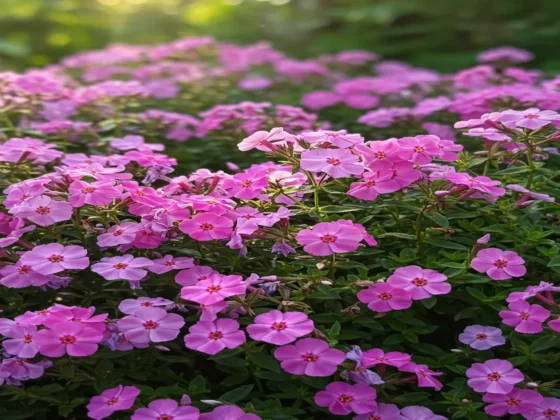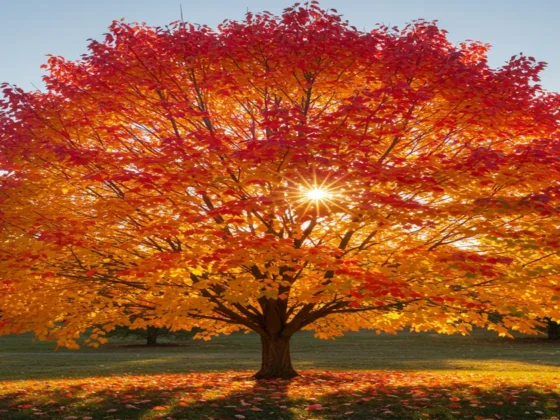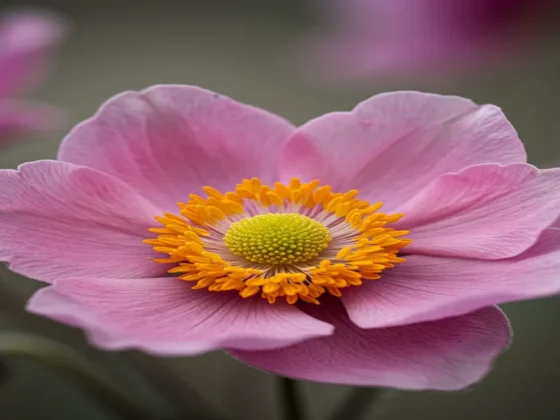The striking hanging trumpet-shaped flowers of the angel’s trumpet (Brugmansia spp.) plant add beauty to any garden. This South American tropical plant can be grown as a woody shrub or small tree, thriving in full sun with frequent watering.
Angel’s trumpet should be planted in mid-spring when nighttime temperatures are at least 50°F. It grows rapidly, up to 2 to 3 feet per year, and typically blooms in the summer. It’s important to note that all parts of the angel’s trumpet plant are harmful if ingested by humans or pets.
Varieties of Angel’s Trumpet

Brugmansia species are characterized by their distinct, hanging trumpet-shaped flowers, with most producing fragrant blooms that open during the night. The main distinguishing factor between each species is the color of their blooms.
- B. suaveolens: Originating from Brazil, this plant blooms in a cream color and is among the most popular species.
- B. aurea: Known for its yellow blossoms, this plant is often referred to as the golden angel’s trumpet. It is native to Ecuador and Venezuela.
- B. sanguine: This species with red flowers lacks scent and is typically pollinated by long-billed hummingbirds. It is found in Colombia and Chile.
- B. vulcanicola: Found in the Andean Mountains extending from Colombia to Ecuador, this angel’s trumpet is salmon-colored and considered the rarest Brugmansia. Its ‘Rosa Lila’ hybrid is a variety with rose-colored blooms.
- B. arborea: Featuring shorter trumpet flowers, this plant often displays a cream color that is whiter than most.
- B. versicolor: Originating from Ecuador, this species boasts the largest flowers in a light apricot shade.
- B. ‘ Cypress Gardens’: Ideal for containers, young plants of this variety often bloom at a height of 3 feet, showcasing numerous white flowers that turn into a light salmon hue as they mature.
Trimming

Cutting back angel’s trumpet will help the plant to continuously produce flowers. If you are growing it to resemble a small tree, start trimming when the main trunk develops its first “Y” shape and select a central leader as the main trunk.
Angel’s trumpet flowers will eventually bloom at the tips of the stems. The optimal time for trimming angel’s trumpet is usually in the autumn. Ensure to leave at least six to 10 nodes on the branches. It is advisable to wear gloves while trimming to prevent skin irritation from the sap.
How to Propagate Angel’s Trumpet
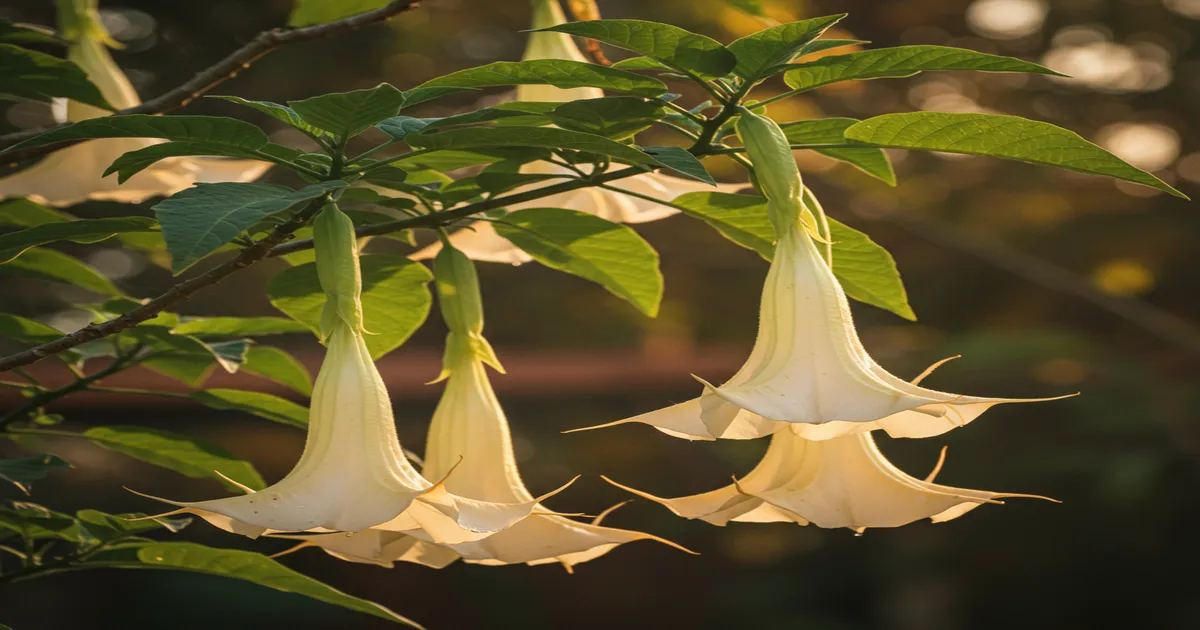
Angel’s trumpet can be successfully propagated through seeds and cuttings in the spring. Stem cuttings are the best method because the plant will mature quicker than from seed. Here’s how to propagate from a stem cutting:
Instructions for Propagating Angel’s Trumpet from Seeds
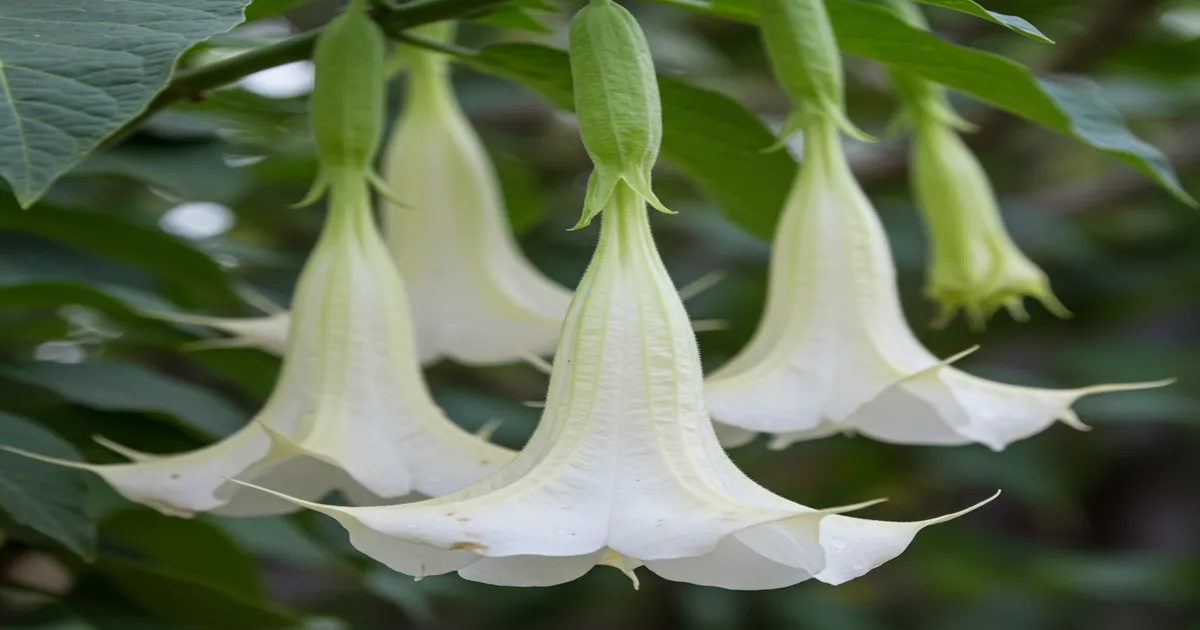
The following are the steps to grow angel’s trumpet from seeds:
Differences Between Angel’s Trumpet and Datura

Angel’s trumpet and datura are commonly known as angel’s trumpets interchangeably. They belong to the Solanaceae family, have a similar appearance, and are both poisonous plants. However, angel’s trumpet plants can reach heights of up to 20 feet, bearing larger, drooping flowers that point downward and have a longer lifespan.
Datura, on the other hand, grows only up to 4 feet tall, featuring trumpet-shaped flowers that face upward, and its spherical, prickly seed pods easily spread on their own. Angel’s trumpet, in contrast, has smooth, elongated seed pods that do not scatter. Datura flowers are typically white or a combination of white and purple, while angel’s trumpet flowers are white or yellow.
How to Pot and Repot Angel’s Trumpet

Angel’s trumpet can thrive in pots, especially when kept outdoors in a non-tropical region. Use a 24-inch wide container. Remember to bring it indoors if the temperature falls below 50°F.
Make sure to water your potted angel’s trumpet thoroughly when it’s outside. Potted plants require more water compared to plants planted directly in the ground. During the peak of the hot, sunny season, plan to water your outdoor angel’s trumpet at least twice a day.
Winterizing

Once the winter season arrives and the outdoor temperatures fall below 50°F, it is advisable to bring your angel’s trumpet indoors. Ensure to water it when the soil dries out, just like any other indoor plant. If kept in temperatures above 60°F, provided with sufficient light, and well-fertilized, it may even bloom while inside.
Alternatively, if you prefer to let it go dormant, you can store it in a dark garage, basement, or closet (ensuring it is not colder than 50°F). Pruning it back by a third will not harm the plant. Water it sparingly, approximately once a month. It might shed its leaves and appear lifeless, but as long as the trunk remains green, the plant is still alive.
Types of Pests
Angel’s trumpet plants are commonly plagued by whiteflies. Additionally, spider mites, mealybugs, and aphids are frequently found on these plants. Other pests that may be encountered include cucumber beetles, slugs, and snails.
To address these pest issues, apply isopropyl (rubbing) alcohol on a cotton ball or swab to target the insects. Alternatively, create a spray by mixing equal parts water and isopropyl alcohol and apply it to the plant. Another option is to use neem oil or insecticidal soap to deter pests from the plant.
Tips for Getting Angel’s Trumpet to Flower
Blooms on an angel’s trumpet plant are only seen once it matures. If grown from seeds, it may take up to five years before flowering. Propagating from a cutting could expedite the process, but it still might take around four years.
Blooming Period
Anticipate angel’s trumpet blooms from late spring/early summer until September.
Duration of Angel’s Trumpet Blooms
Typically, angel’s trumpet flowers until fall, but in specific climates (with proper care), it can bloom year-round.
Appearance and Scent of Angel’s Trumpet Flowers
Angel’s trumpet displays yellow, orange, white, and pink flowers with a delightful, potent fragrance (reminiscent of aniseed). The blooms are bell-shaped, measuring 6 to 10 inches long, and hang downward.
Promoting More Blooms
To encourage blooming, angel’s trumpet requires sufficient water for flower production and proper drainage for healthy roots. It also needs regular fertilization as it is a heavy feeder. If these conditions are met, ensure the plant is not root-bound.
If the angel’s trumpet is in a small container, it may not bloom. Transfer it to a larger pot, water it adequately, and provide nutrients.
Post-Blooming Care for Angel’s Trumpet
Fertilize every two to three weeks. Place the plant outdoors during the growing season as it will not bloom indoors.



